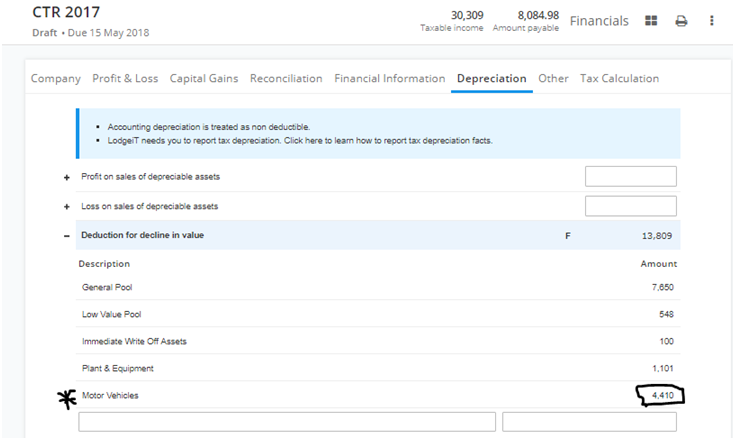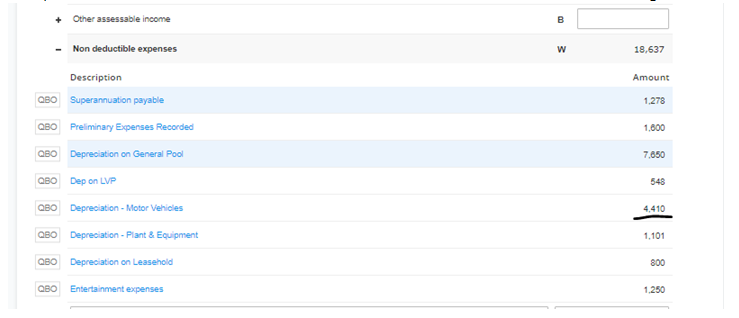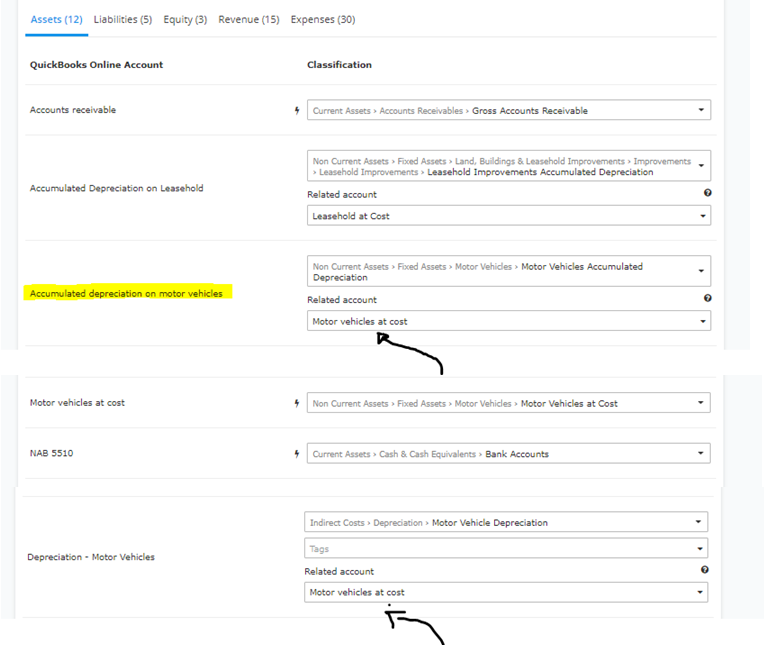- Setting a start date. Learn more
- Configuring a depreciation group (in this example for motor vehicle depreciation)
- Introducing an asset with an opening written down value
- How to handle classification of the asset, accumulated depreciation and depreciation
- How the accounting and tax depreciation values are treated in the tax return
- How the accounting values are treated in the "Financial Reports/Statement"
- The disposal of an asset at a loss and the subsequent treatment of the loss in the tax form and "Financial Reports"
- The disposal of an asset at a gain and the subsequent treatment of the gain in the tax form and "Financial Reports"
Maintain an accounting system and set of depreciation reports for the company. Process the depreciation journals into the company accounting system.
You can then use LodgeiT Working papers -

In this case the tax depreciation facts are produced by the depreciation module and populate the form dynamically.
(NOTE - If you don't use the LodgeiT Depreciation Module you MUST fill this section manually.)

And the accounting facts arrive from the import of the profitLoss report (example below is an import from 'QuickBooks Online'. But you can import from ANY accounting system either via API in case of Xero, MYOB Account Right Live & 'QuickBooks Online', OR any legacy desktop system via our LodgeiT Smart Excel Utility or even your own pre-constructed balance sheet & profitLoss combos .
Then, use the reconciliation section of the tax form to review the added back accounting facts & the deducted tax facts.

(NOTE - You can cross-reference the $13,809 with the image above showing the depreciation section of the form.)

To get this to work correctly, you need to classify imported accounts via Accounts-

Related Article:
